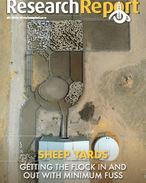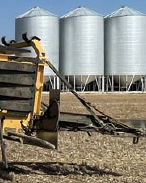The permanence rules for the CFI required that the carbon stocks in sequestration projects be retained for 100 years. The ERF has introduced an optional permanence period of 25 years; however, a project proponent using the 25-year period will receive 20% fewer ACCUs. This means that there is a potential for ongoing costs even after the crediting periods for the project are completed.
The permanence obligation has a number of broad implications for costs:
-
In the normal course of events (if sequestration is successful and undisturbed), after the end of the crediting period the obligation to maintain the carbon stores will remain until the end of the permanence period. If the permanence period has not yet finished, selling the land may require transferring the sequestration project to the new landowner (who will need to become the project proponent and a recognised offsets entity). At the very least, this increases transaction costs for the sale. The seller and buyer both have responsibilities:
-
The seller of the land containing the project must ensure that any agent or prospective buyer is fully informed of the permanence obligation.
-
The buyer of the land needs to inform himself or herself about the sequestration project, including by reviewing records, understanding the methodology and checking with the register of offsets projects.
-
Alternatively, the sequestration project can be cancelled at any time. This would require the relinquishment (return) of the ACCUs earned under the project (or the purchase of replacement ACCUs if the original ACCUs have already been sold).
-
If something goes wrong during the sequestration project and carbon stores are depleted, the project proponent (which may or may not be the landowner) must take reasonable steps to restore the carbon stores. If they are unable to do so, they may have to relinquish ACCUs to the regulator.
-
If the project proponent (which may or may not be the landowner) does not relinquish ACCUs as required, the regulator may impose a carbon maintenance obligation on the land. This attaches to the title of the land and imposes obligations on current and future landowners (regardless of whether they were the original project proponent):
-
A carbon maintenance obligation seeks to prevent the landowner from engaging in conduct that results, or is likely to result, in a reduction in carbon stores below the benchmark sequestration level, unless the conduct relates to an activity that is expressly permitted under the carbon maintenance obligation.
-
The benchmark level is the amount of carbon sequestered in the relevant area or areas at the time that the carbon maintenance obligation was made.
Explore the full Workshop Manual: The business case for carbon farming: improving your farm’s sustainability (January 2021)
Read the report
RESEARCH REPORTS
1. Introduction: background to the business case
This chapter lays out the basic background and groundwork of the manual
RESEARCH REPORTS
1.2 Being clear about the reasons for participating
Introduction: background to the business case
RESEARCH REPORTS
1.4 Working through the business case for carbon farming
Introduction: background to the business case
RESEARCH REPORTS
1.5 Factors determining project economics
Introduction: background to the business case
RESEARCH REPORTS
1.8 Important features of the business case
Introduction: background to the business case
RESEARCH REPORTS
2. How carbon is farmed under the ERF
This chapter considers in detail the activities that constitute carbon farming
RESEARCH REPORTS
2.5 Carbon farming under the Emissions Reduction Fund
How carbon is farmed under the ERF
RESEARCH REPORTS
3. The policy context and the price of ACCUs
This chapter takes a broad look at the policy context for carbon farming






















